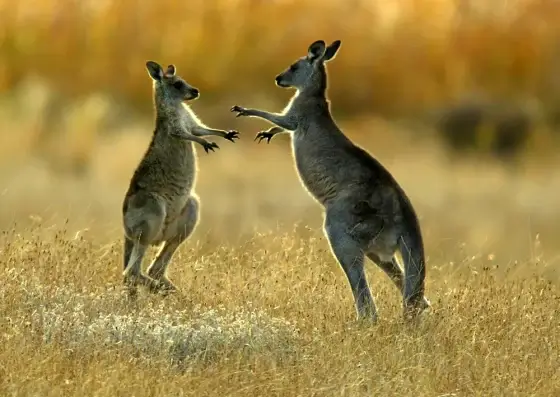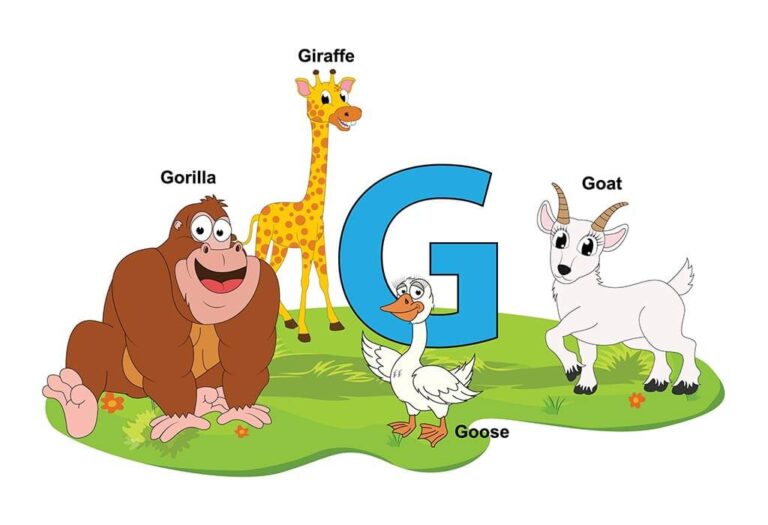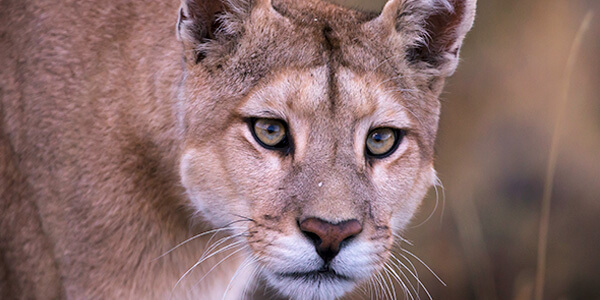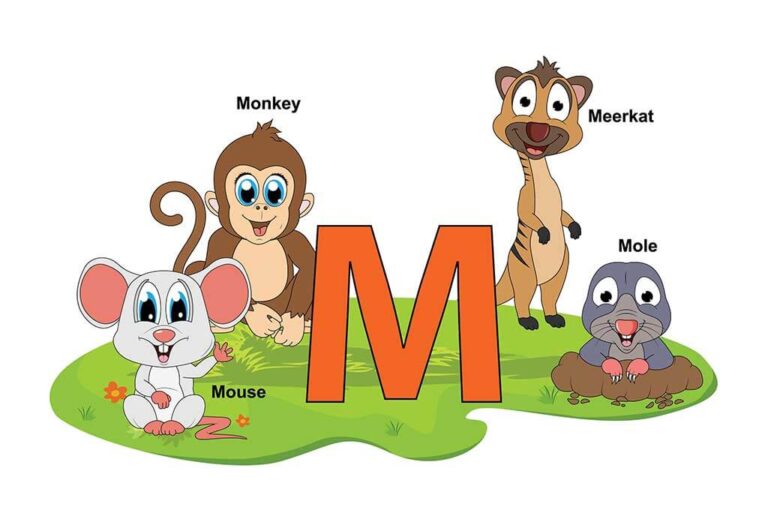Kangaroo: Habitat, Behavior, Diet, and Conservation Explained
The kangaroo is an iconic symbol of Australia, known for its powerful hind legs, long tail, and pouch. This fascinating marsupial has evolved unique adaptations that allow it to thrive in the Australian wilderness. This comprehensive guide will reveal the kangaroo classification, physical characteristics, habitat, behavior, diet, reproduction, predators, conservation status, evolutionary history, and its relationship with humans.
Contents
Scientific Classification
- Kingdom: Animalia
- Phylum: Chordata
- Class: Mammalia
- Order: Diprotodontia
- Family: Macropodidae
- Genus: Macropus
- Species: There are four main species:
- Red Kangaroo (Macropus rufus)
- Eastern Grey Kangaroo (Macropus giganteus)
- Western Grey Kangaroo (Macropus fuliginosus)
- Antilopine Kangaroo (Macropus antilopinus)
Kangaroos belong to the Macropodidae family, which includes other species like wallabies and tree kangaroos. The term”macro” “”” means” “large,” oot,” “and the languishing feature of the kangaroo.
Physical Characteristics

Kangaroos are renowned for their distinctive appearance, characterized by their large hind legs, muscular tails, and compact forelimbs. Here are some critical physical traits:
- Size: Red kangaroos, the largest species, can stand over 6 feet (1.8 meters) tall, while smaller species, like the Eastern Grey, range between 4 to 6 feet.
- Weight: Male red kangaroos can weigh up to 200 pounds (90 kilograms), with females being significantly lighter.
- Legs & Tail: KangaroKangaroos’ull hind legs allow them to leap vast distances—up to 30 feet in a single bound. Their long tails help maintain balance and provide support while hopping.
- Fur Color: The red kangaroo has a reddish-brown coat, while the grey kangaroo is typically light to dark grey.
Habitat
Kangaroos are native to Australia and are widely distributed across the continent, with different species favoring specific habitats:
- Red Kangaroo: It is found in arid and semi-arid regions like deserts and open plains.
- Eastern Grey Kangaroo: Common in eastern Australia, thriving in woodlands, forests, and grassy plains.
- Western Grey Kangaroo: It inhabits the southern and western parts of the continent, preferring scrublands and forests.
- Antilopine Kangaroo: Found in northernAustralAustralia’sall savannas.
Behavior

Kangaroos are social animals, typically living in groups known as”mobs.” “The” “behavior can vary depending on species, but some common traits include:
- Mob Structure: Mobs are usually led by a dominant male, known as a”boom,” with” females and younger males making up the rest of the group.
- Movement: Kangaroos move by hopping, using their hind legs and tail for propulsion and balance. They can reach speeds up to 35 mph (56 km/h) when fleeing predators.
- Communication: Kangaroos use grunts, hisses, and foot stomps to communicate. Aggressive males may box each other to establish dominance.
Diet
Kangaroos are herbivores, feeding primarily on grasses, leaves, and shrubs. Their diet varies slightly depending on their habitat:
- Red Kangaroo: Feeds on grass and other vegetation found in arid environments.
- Grey Kangaroos: Lush grasses and foliage are preferred in temperate regions.
- Antilopine Kangaroo: Browses on grass and leaves in tropical habitats.
Kangaroos have a specialized digestive system with chambered stomachs that allow them to extract maximum nutrients from fibrous plants.
Reproduction
Kangaroos exhibit a fascinating reproductive process:
- Gestation Period: Lasts around 30–36 days.
- Birth: A single tiny joey, weighing less than a gram, is born and crawls into its mother’s ‘where. It continues to develop.
- Pouch Development: The joey stays in the pouch for 6–8 months before emerging but continues to nurse until about 12 months.
One unique adaptation is embryonic diapause, where the mother can delay the development of an embryo if environmental conditions are unfavorable, ensuring the species’ survival.
Predators and Threats
Adult kangaroos have few natural predators due to their size and strength. However, joeys and weaker individuals are more vulnerable. Common predators include:
- Dingoes: The main natural predator of kangaroos is targeting younger or injured individuals.
- Wedge-tailed Eagles: These large birds of prey may occasionally hunt smaller kangaroos and joeys.
- Humans: Kangaroos face threats from hunting and vehicle collisions, particularly in rural areas.
Conservation Status
Thanks to their adaptability and extensive range, most kangaroo species are not considered endangered. However, localized threats like habitat destruction and climate change threaten some populations. Conservation efforts focus on maintaining healthy habitats and regulating hunting.
The IUCN Red List classifies the red and grey kangaroos as species of” Least” concern” but “monitoring and conservation strategies are essential for ensuring their long-term survival.
Interesting Facts about Kangaroos
- Kangaroo Boxing:
- Male kangaroos often engage in”boxing,” “match,” and using “and their forelimbs and powerful hind legs to fight over mates.
- Efficient Hoppers:
- Kangaroos use less energy, hopping faster than walking, making them incredibly efficient movers.
- Water Conservation:
- Kangaroos can survive long periods without water, getting much of their moisture from the plants they consume.
Evolutionary History
Kangaroos have evolved over millions of years, with fossil records dating back 25 million years. Early kangaroo ancestors, such as Balbaroo and Nambaroo, were much smaller and more arboreal. Over time, kangaroos adapted to ground-dwelling, hopping locomotion as Australia’s became drier and more open.
The unique evolution of kangaroos is closely tied to the changing Australian landscape, favoring species that could efficiently travel long distances in search of food and water.
Relationship with Humans
Kangaroos are special in Australian culture, serving as national symbols and featured in the country’s arms. However, their relationship with humans is complex:
- Hunting:
- In some areas, kangaroos are considered pests due to their large populations and impact on crops. As a result, controlled hunting is permitted to manage numbers.
- Tourism:
- Kangaroos are a significant draw for tourists, with visitors flocking to Australia’s parks to glimpse these iconic marsupials.
- Road Accidents:
- Kangaroos are involved in many road accidents, particularly in rural areas, which has led to efforts to improve road safety measures for both kangaroos and drivers.
Conclusion
Kangaroos are fascinating creatures with unique adaptations that allow them to thrive in the varied landscapes of Australia. From their impressive leaping abilities to their complex reproductive system, kangaroos have captivated scientists and wildlife enthusiasts alike. While they face challenges from human expansion and environmental changes, kangaroos remain integral to Australia’s identity.
- Golden Retriever Pros and Cons: What Every Pet Parent Should Know - 15 September 2025
- Cane Corso Dog Breed: Health, Care, and Lifespan - 14 September 2025
- Catahoula Leopard Dogs: Description, Temperament, Lifespan, & Facts - 21 July 2025







